
Military camouflage is the use of camouflage by an armed force to protect personnel and equipment from observation by enemy forces. In practice, this means applying colour and materials to military equipment of all kinds, including vehicles, ships, aircraft, gun positions and battledress, either to conceal it from observation (crypsis), or to make it appear as something else (mimicry). The French slang word camouflage came into common English usage during World War I when the concept of visual deception developed into an essential part of modern military tactics. In that war, long-range artillery and observation from the air combined to expand the field of fire, and camouflage was widely used to decrease the danger of being targeted or to enable surprise. As such, military camouflage is a form of military deception in addition to cultural functions such as political identification.

Norman Wilkinson was a British artist who usually worked in oils, watercolours and drypoint. He was primarily a marine painter, but also an illustrator, poster artist, and wartime camoufleur. Wilkinson invented dazzle painting to protect merchant shipping during the First World War.

The Public Ledger was a daily newspaper in Philadelphia, Pennsylvania, published from March 25, 1836, to January 1942. Its motto was "Virtue Liberty and Independence". For a time, it was Philadelphia's most popular newspaper, but circulation declined in the mid-1930s. It also operated a syndicate, the Ledger Syndicate, from 1915 until 1946.
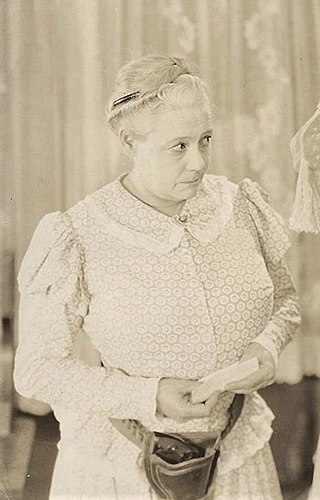
Lillian Langdon was an American film actress of the silent era. She appeared in more than 80 films between 1912 and 1928.

Miss America 1923, was the third Miss America pageant, held at the Million Dollar Pier in Atlantic City, New Jersey on Friday, September 7, 1923.
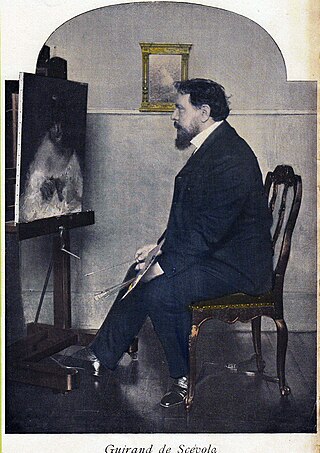
Lucien-Victor Guirand de Scévola was a French painter. He is known for his pioneering leadership of the Camoufleurs in World War I.
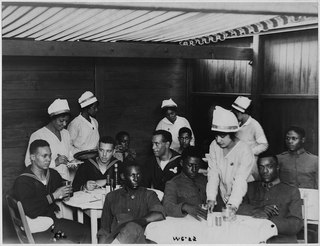
The National League for Women's Service (NLWS) was a United States civilian volunteer organisation formed in January 1917 to provide stateside war services such as feeding, caring for and transporting soldiers, veterans and war workers and was described as "America's largest and most remarkable war emergency organization."
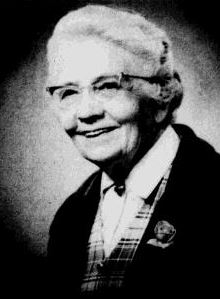
Kady Faulkner (1901–1977) was an American muralist, painter and art instructor who gained recognition in the middle of the 20th century. She has works in the permanent collections of the Smithsonian American Art Museum, the Pennsylvania Academy of the Fine Arts, and the Great Plains Art Museum, as well as others. She was selected to work on the United States post office murals project of the U.S. Treasury during the New Deal and completed a mural for the Valentine, Nebraska post office. A mosaic by Faulkner in Kenosha, Wisconsin adorns the former bakery on the Kemper Hall grounds. She was an associate professor of Art at the University of Nebraska–Lincoln between 1930 and 1950 and then instructed headed the Art Department at Kemper Hall until her retirement.

The 1917 Bath Riots occurred in January 1917 at the Santa Fe Street Bridge between El Paso, Texas, United States, and Ciudad Juárez, Chihuahua, Mexico. The riots are known to have been started by Carmelita Torres and lasted from January 28 to January 30 and were sparked by new immigration policies at the El Paso–Juárez Immigration and Naturalization Service office, requiring Mexicans crossing the border to take de-lousing baths and be vaccinated. Reports that nude photographs of women bathers and fear of potential fire from the kerosene baths, led Carmelita Torres to refuse to submit to the procedure. Denied a refund of her transport fare, she began yelling at the officials and convinced other riders to join her. After three days, the discontent subsided, but the disinfections of Mexicans at the U.S. border continued for forty years.
Mabel Marks Bacon was an American hotelier. She designed and operated several prominent hotels along the Gulf Coast in the 1930s. In the 1910s she was known for her skill with sailing, skippered a portion of a race from New York to Bermuda in 1910, and learned to drive in 1911. She raised her children in Maine and Panama, where the family lived while her husband was employed by the Panama Canal Company. In 1921, after returning to the United States, she ran a hotel known as the Inn-by-the-Sea in Pass Christian, Mississippi, which was a luxury resort built by her husband. Losing the hotel during the Great Depression, the family lived on board a boat for several months before landing at Dauphin Island, Alabama. Leasing the abandoned Fort Gaines from the government, they ran The-Sea-Fort-Inn until they discovered property while sailing along the Santa Rosa Sound. In 1935, they moved to Mary Esther, Florida, where Bacon designed and ran Bacon's-by-the-Sea. The hotel was frequented by several movie production companies and stars and was listed in 1954 as one of the top ten hotels in America in Look.
The 1918 League Island Marines football team represented the United States Marine Corps stationed at the League Island Navy Yard in Philadelphia during the 1918 college football season. The team was coached by Byron W. Dickson. A game scheduled for October 19 against Villanova was cancelled due to Spanish flu quarantine.
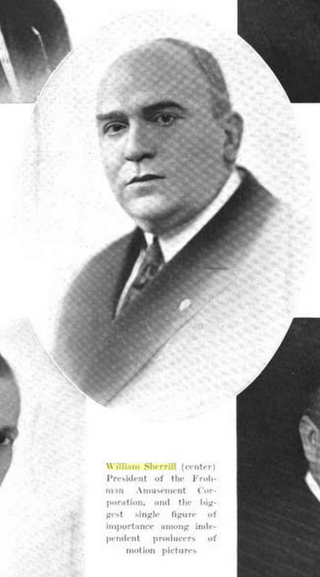
William L. Sherill was a producer in the early film industry of the United States. He served as president of the Frohman Amusement Company. A 1918 issue of Theatre Magazine reported he was the single most important figure among independent producers of motion pictures.
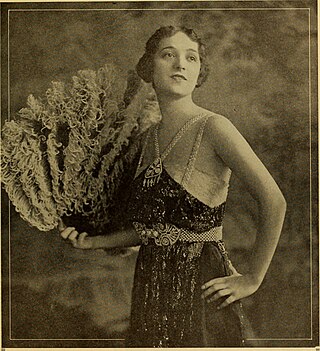
Aimée Dalmores, née Aimée Cerruti, was an Italian-born American actress in musical theatre and silent films.
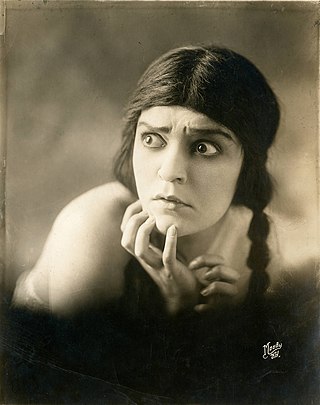
Ekaterina Galanta, often billed as Ketty Galanta, was a Russian dancer, a member of the Ballets Russes.

A protested game occurs in baseball when a manager believes that an umpire's decision is in violation of the official rules. In such cases, the manager can raise a protest by informing the umpires, and the game continues to be played "under protest." Protests were allowed in Major League Baseball (MLB) through the 2019 season, after which they were abolished.

Elizabeth Wendell Hunter Ewing served as a nurse during the American Civil War, and later as president of the National Association of Army Nurses of the Civil War.
The Temple Owls football program from 1910 to 1919 was led by three head coaches. William J. Schatz was the head coach from 1909 to 1913 and compiled a 13–14–3 record. William Nicolai was the head coach from 1914 to 1916, compiling a 9–5–3 record. Elwood Geiges was hired as the head coach for the 1917 season, but Temple University opted to cancel the season due to a manpower shortage resulting from World War I. The program did not return until 1922.

Ethelyn Gibson (1897–1972), sometimes credited as Ethlyn Gibson, was an American stage and screen actress who featured in films and productions in the 1910s and 1920s. First joining the theatre through becoming a member of The Charlie Chaplin Revue in 1911, she then became involved in other revue productions as a member of the Ziegfeld Follies. She joined the silent-film industry beginning in 1917, appearing with Oliver Hardy before acting as a leading lady in multiple Billy West films. Later, she also appeared in works with Charley Chase. One of her most famous roles was acting as the title character in the Winnie Winkle series of films from 1926 to 1928.
Nerine Barrett is a Jamaican classical pianist, one of the few black women who have achieved international recognition as a pianist. She was selected in 1966 by the Young Concert Artists to appear at Carnegie Hall and the following year won the Mozart Memorial Prize of the Haydn-Mozart Society of London. In the 1980s, she began teaching music as a professor at the Hochschule für Musik Saar and later at the Hochschule für Musik Detmold. She continued to perform both as a solo artist and as part of the Trio Paideia.
The American Camouflage Corps was organized in 1917 at the officers' training camp in Plattsburgh, New York, as the first such corps in the U.S. Army. Its organizers were architect Evarts Tracy of Tracy and Swartwout, and artists Wilford Conrow and Homer Saint-Gaudens.









































